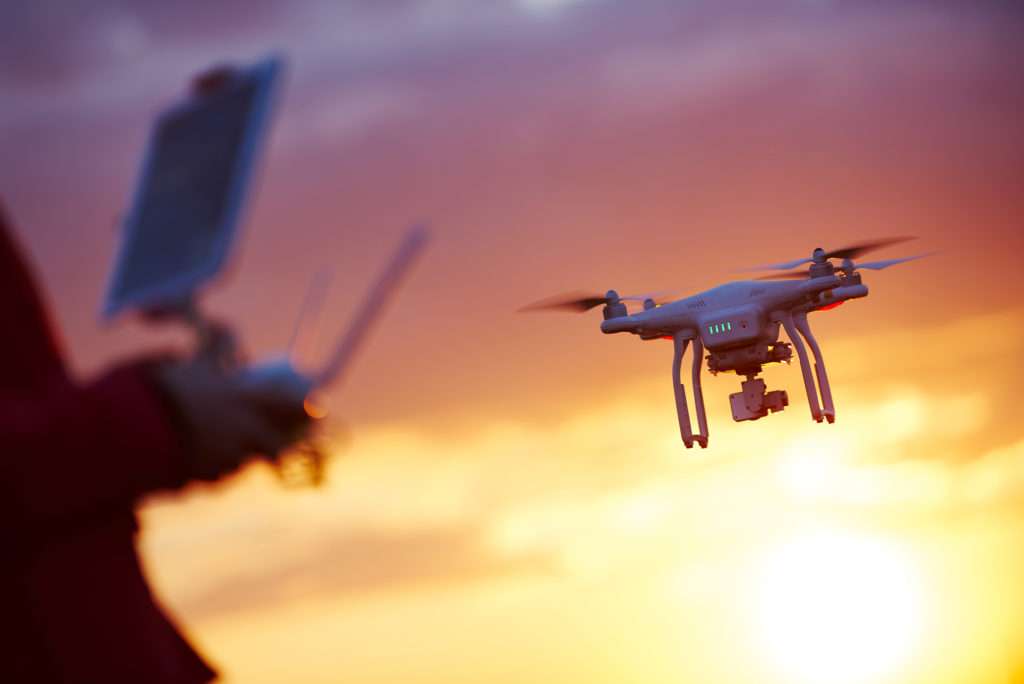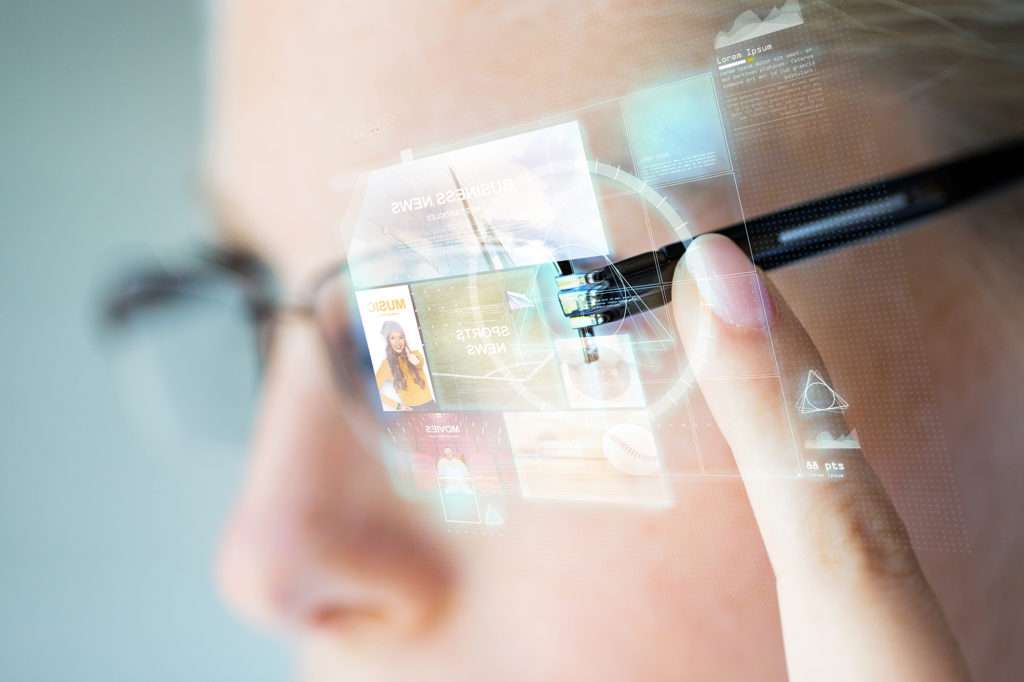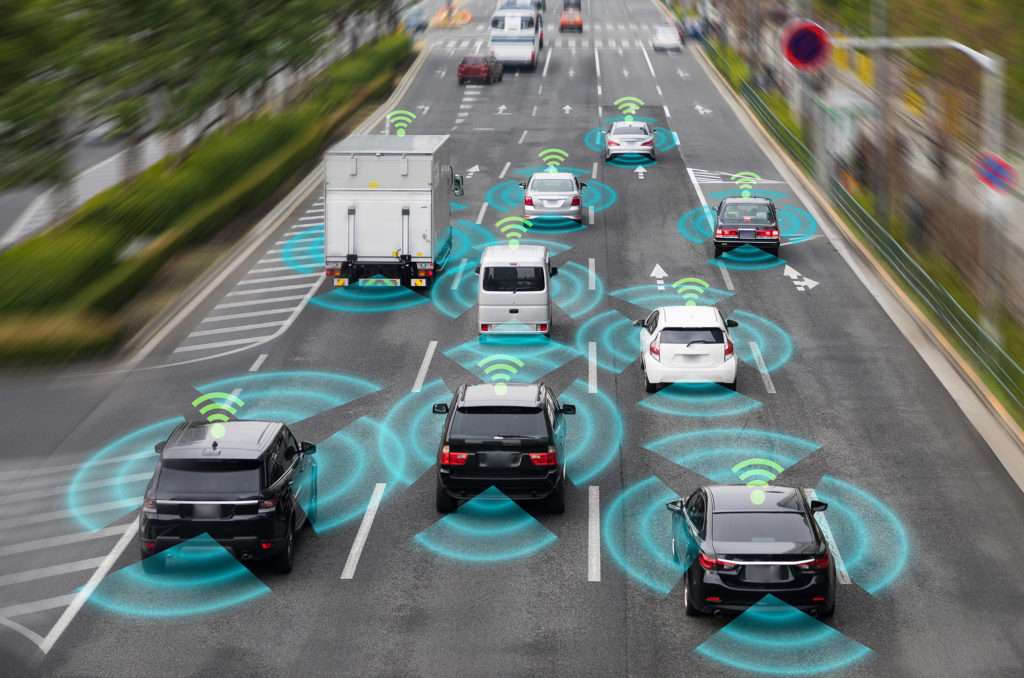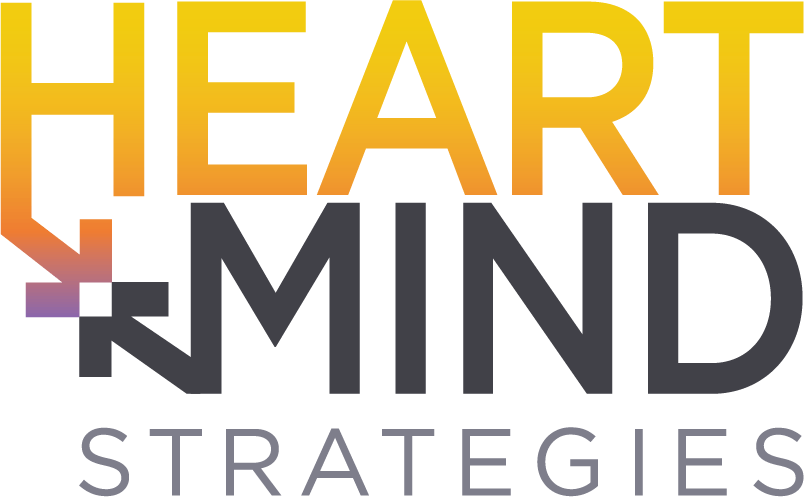There is no denying the importance of technology today. It connects us, entertains us, enables us, assists us, and so much more. So, when the promises of a network with 100x faster speeds, up to 5x the bandwidth, and next to no latency in comparison to its 4G predecessor emerge, our ears perk up. Enter: 5G. This revolutionary “5th Generation” of mobile networks utilizes a combination of frequencies from multiple wavelengths (as opposed to one) to maximize throughput, versus cramming all mobile network traffic down a figurative one lane internet highway.
At Heart+Mind’s November RoundTable, we discussed the 5G revolution with two guest speakers: David Rose, MIT lecturer and author of SuperSight, a book detailing the future implications of Augmented Reality, as well as Susanne Seitinger, lead of Public Sector Marketing in the US for Verizon. In this post, we’ll explore the realities and implications of 5G both now and in the future. What we know for sure – 5G will change everything.
Converging Technologies
5G is poised to be the invisible catalyst of our technologically enhanced future; it is set to transform not only the way we communicate via phone and internet, but also the way we interact and connect with the world around us.
“One of the things that typically drives the location of an urban agglomeration, a city, especially in history is a resource, right? So, if you think about rivers, if you think about roadways, if you think about [the] ocean, access to those are resources around which human activity and innovation formed. 5G is a little bit like that. It’s a new highway, it’s a new roadway, it’s a new resource that’s available to a collective group of humans who decide to take advantage of it. And it moves with you much like our other wireless connectivity has done to transform our lives.”
Susanne Seitinger, Verizon
5G will set the stage for the implementation and integration of resources such as Augmented Reality (AR), Spatial Computing, and the Internet of Things (IoT) into daily life. Even more powerfully, these resources are intersecting and merging, creating dynamic tools and experiences that yield new and exciting results.
RELATED: 4 Ways Technology Can Improve Happiness
Here are 3 examples of how technologies are converging to expand horizons: Drones, Location Specificity, and 3D Configurators.
Drones: Drones have grown in popularity over the past few years among individuals, commercial entities, and the government due to their extensive number of uses and applications. The breadth of this list continues to expand as emerging technologies are integrated into their makeup.
“When I think about convergence technologies, I often think about drones. If you look at what a DJI or other drone has baked into [it], that is a convergence technology, right? [They’re] using cameras that are HD cameras.… [they also provide] battery technology, motion control systems, low cost…, connectivity, [and] precision GPS.”
Susanne Seitinger, Verizon

RELATED: 10 Unusual Uses for Drones
Location specificity: Accuracy of location aids pedestrians and the military alike, and has numerous applications in the agricultural and aviation realms.
“Precision GPS is another thing that 5G will give us that a lot of people don’t realize or notice, but if you’re doing something like taking a survey or you’re out and about, and you want to know exactly where you are, the level of specificity of knowing where you are in the world goes from kind of plus or minus a few meters to tenths of centimeters with 5G.”
David Rose, author of SuperSight
3D Configurators: Utilizing special computing with 5G connectivity, we’ll be able to use our phones to overlay visuals into our environment in real time.
“I think 3D configurators are a big new thing. So if you’re making a product that has some physical instantiation of it in the world, the ability to see the sectional couch or to see the tree that needs to be planted, or to see the glasses on your face, or to see, you know, any kind of virtual try-on, whether it’s your house, trying something on your body, or a city that’s trying something on, that’s a big new thing that’s going to help people feel more confident about making a change and solve that envisioning imagination gap.”
David Rose, author of SuperSight
“The internet has been able to give us the ability to access Wikipedia whenever we need to, but it hasn’t actually spatially anchored the information into the world. So, it’s really, really different to think about [the possibility of taking] all of Wikipedia now [and pasting] it with post-its–or whatever your metaphor is–in the places where it’s interesting. Because then it’s this layer on the people and the objects and everything else in the world that means we’ll encounter [information and history] a lot more…. You [will no longer] have to type it into a search bar in order to get that information.”
David Rose, author of SuperSight
Beyond the Phone
The full launch of 5G will unleash incredible new ways to engage with the world around us that extend well beyond our mobile devices. Augmented Reality opens a world of possibilities – some in entertainment, but also in efforts working to improve the lives of medical patients and the hearing impaired. Let’s look at a few examples:
Enchanted Objects: Products that seem to have magical abilities like Ray-Ban Smart Glasses or Nreal Augmented Reality Glasses.
Ray-Ban has partnered with Facebook to create these internet-connected glasses. Each pair has air pods built into the temples, as well as two HD cameras to enable the customer to live-stream what they see while keeping both hands free.
“[These glasses help] if you need both hands to be working on something, and you need somebody else to be looking through your eyes [or] offer some tips and some guidance and some navigation with some tasks. Like, how many times throughout the day would you love to just kind of beam in the expert and say, ‘Just watch over my shoulder here and make sure that I don’t mess this one thing up’, you know? There’s a big promise for reduction of risk on the job and leveling up people [and] upskilling in a new way, if you can have that experience of just letting someone else see what you’re seeing.”
David Rose, author of SuperSight
RELATED: Introducing Ray-Ban Stories: First-Generation Smart Glasses

Nreal partnered with Verizon to produce their augmented reality glasses. These glasses have many of the same capabilities as their RayBan counterparts, but with an added time of flight camera with binocular projection capabilities. This addition allows the ability to blend reality with a virtual projection, almost like that of a screen, so that customers can experience a hybrid reality: their environment around them overlayed with a virtual projection.
“The product that I’m working on for boaters is called Clearwater. What we’re doing is we’re spatially anchoring topo maps over bodies of water to show you a kind of an x-ray vision view of the water. So, you’ve seen this in cities for city planning, like where you can see the pipes, the infrastructure through the concrete of the city. This is kind of the same idea, except for water. It kind of feels like a glass bottom boat, but you’re seeing the real world. And then you’re also seeing this digital layer.”
David Rose, author of SuperSight
Scene Segmentation: Allowing the average person to experience life with the “trained eye” of an expert, like 3D configurations for homeowners, or 3D overlays of changes in an environment over time that can be used in travel and tourism or education.
Working in conjunction with Google Street view photos, AR and Spatial Computing converge to create 3D configurations for homeowners to visualize sustainable landscapes and architectural changes to their property prior to ever making a purchase. A person can create a digital twin of a current landscape and observe how planting shrubs that attract natural pollinators will grow, mature, and create environmental impact over time.
This technology can also be used to overlay actual historical environments. Using smart glasses or a cell phone, you can facilitate a view of an alternate moment in time while physically being present in the space; forever changing the way we view education.
David Rose, author of SuperSight
“The difference between the reading of the book versus the entering a simulated environment, that’s experiential, where [you can] take Athens and recreate a Olympian Athens output from the rubble of what’s barely there. I would love those kinds of experiences for my learning style.”
Live Captioning: A company called Caption Glass has used AR to help those who are hard-of-hearing live-caption conversations they are having, all while eliminating unnecessary background noise or side conversations.
Post Detection: This unique application allows physical therapists to project a skeleton onto a patient through a screen to better see and understand their range of motion, thus improving their ability to work with that patient.
Federal Applications: The Federal Government is blending IT and OT (operational technology), therefore transforming communication and connectivity across an array of platforms, while also working to make these resources equally accessible to all.
Staff Interaction and Connection: Emerging capabilities allow for superior employee training (think Starfleet Academy group simulated training exercises), but also allow for heightened communication between employees and employers while on the job. This improved communication can lead to an increase in efficiency, reduction of human error, and increase in employee recognition.
Internet of Things (IoT)
Augmented Reality is only the tip of the iceberg. 5G will also unleash the power of IoT—the Internet of Things—and allow for technologies to better work with each other. Our internal research has identified several noteworthy examples of what IoT will look like once fully deployed:

Self-Driving Cars: IoT connected vehicles are computer enhanced and have the capability of completing mundane driving tasks, and even have the capability to drive themselves completely.
Smart Cities: Utilizing IoT, smart cities connect a wide variety of devices together to collect and analyze data to increase efficiency, productivity, and sustainability across all platforms. Aiming to improve quality of life, smart cities help solve issues related to climate change, outdated infrastructure, and overpopulation, to name a few.
Remote Asset Monitoring: Simply put, remote asset monitoring allows you to access your asset from afar. Depending on the type of remote asset monitoring, either “read-only” or “read/write”, you can either only have visual access to the data (unable to “write back” to the asset), or you can have both the ability to view the data and also communicate back to the asset, therefore accessing it from afar.
RELATED: The Top 10 IoT Use Cases
The Reality of the Matter
With any new technology, concerns arise. It is true that 5G will create new opportunities for technology to touch nearly every part of our lives – and there are six hazards outlined in David Rose’s SuperSight book that he cautions us to watch out for. In our RoundTable discussion, we called out two in particular: cognitive crutches and accessibility.
Cognitive Crutches: Similar to how the rise in technology and keyboard use led to the deterioration of handwriting, the introduction of any new assistive technology invention can lead to the weakening of a skill we no longer use. We must actively practice and challenge our abilities, to ensure they do not diminish over time.
Accessibility: Accessibility to 5G and all its capabilities is perhaps the largest hurdle to overcome as we move forward with deployment. What’s to say this new resource won’t create a caste system among the wealthy and/or urban residents? Luckily, the government and leaders in the field are working quickly to mitigate any potential access issues before they arise.
“The new infrastructure bill that was just signed into law by President Biden earlier this week is a total game changer as access goes. We’re at a crossroads where I think… this investment will drive a much broader focus on equitable access to [all kinds] of activity whether that’s in rural locations, in certain urban locations, whether that’s for tribal nations and… [will also think] about how to truly, truly provide the level of connectivity that’s required. Very rural landscapes need this kind of infrastructure as well. If you think about how advanced technologies are being deployed in farm environments and everywhere, we’re going to see a whole sea of change as a result of this investment.”
Susanne Seitinger, Verizon
Installing infrastructure will be vital to supplying access to those living in remote or rural areas. Furthermore, programs are being created to provide connectivity for all, regardless of socioeconomic status:
“A lot of leaders are thinking about how to make sure that they can use this funding in order to drive equity and [develop] the right kinds of programs. We’re working with agencies who are setting up new digital inclusion programs, where the agency housing department these days is not just responsible for providing housing [but] they also need to think about connectivity for their residents, so that they can also stay employed, look for new jobs, have access to resources for education and training. And so that’s becoming part of what these agencies are thinking about in their programs and really tying the connectivity to certain outcomes…because just the access alone isn’t enough as we know. So really providing the support infrastructure around it is almost as important as the initial, upfront access.”
Susanne Seitinger, Verizon
Giving It To You Straight
Technology is a beast. It’s everywhere, present in so much of our lives. But so many don’t completely understand how the tech world is evolving or what’s in store. They’re not alone.
At Heart+Mind, we are passionate about uncovering the forces that influence human values and drive decision-making – and make no mistake, technology is one of these forces. It connects us to each other, defines what “work” currently looks like for many, determines “access” to more than we realize, and influences how we view the world. Technology shapes the way we think, the choices we make, and even how we feel.
Currently, about half of Americans believe that they are already experiencing the full effects of 5G, when, in reality, it isn’t fully deployed yet…not even close. Infrastructure must continue to be implemented and legislation must continue to be passed to assure equal accessibility. The good news? The U.S. is well on its way to this new reality and the recent infrastructure bill will only help expedite this process.
RELATED: 31 Examples That Showcase What 5G is Capable Of
So, if we recognize the power of technology and recognize how quickly it’s evolving, how do organizations adapt to this changing world?
- There is a real opportunity for your company to leverage technology to better understand what is in the hearts and minds of the customers who matter most to you.
- 5G has strengthened communications, allowing organizations to reach target audiences in new and more sophisticated ways.
- Ultimately, incorporating more advanced technology into business strategy will increase brand resonance and, in turn, profitability.
For many organizations, embracing advancing technology can be key to unlocking a world of potential. With that in mind, our advice, as 5G continues to roll out over the next few years, is to familiarize yourself with how AI and IoT can benefit you and your organization because once it’s fully deployed, it will influence all aspects of your personal and professional life.
When that happens, you won’t want to be playing catch-up.
